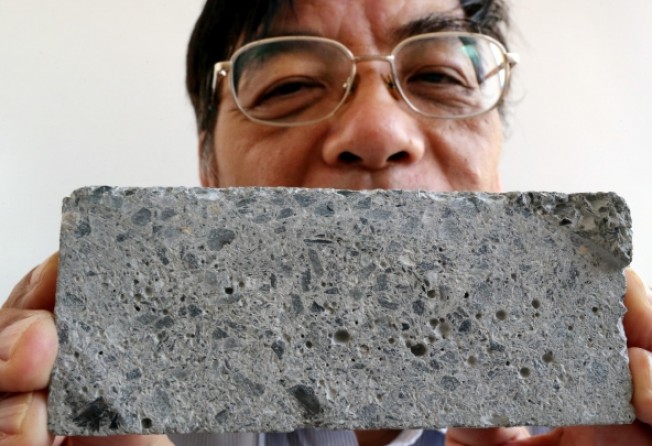HKU study finds glass can replace river sand for building needs
University of Hong Kong study finds recycled materials might remove need to use river sand

Recycled glass could solve the problems of the building industry's huge demand for river sand and minimise the ecological impact on the Pearl River Delta.
The Construction Industry Council commissioned a HK$3 million study at the University of Hong Kong to seek an environmentally-friendly alternative to river sand, a key component of concrete and mortar.
It found that recycled glass crushed into fine particles could be the answer - a discovery that could mean big business for the glass recycling industry.
"The rapid developments in Hong Kong and in the region have created a huge demand for river sand," Professor Albert Kwan Kwok-hung of the university's Department of Civil Engineering said. "With a higher value, illegal dredging on upper streams has increased.
"Sometimes suppliers have quietly replaced river sand with sea sand - with its high level of salt, this could erode a building."
Following a mainland television exposé showing how sea sand was being used to make substandard building materials, 14 major building projects in Shenzhen were put on hold in March while local government officials tested concrete samples.
In April, the South China Morning Post commissioned tests on a concrete sample taken from one of the building projects - the Jiayu Garden housing development. Relatively high levels of salt and chloride were found.
Japan and many European countries had already stopped dredging or banned the export of river sand, Kwan said. The mainland had also tightened the amount it exported.
In Hong Kong, most contractors now used crushed rock from quarries to replace river sand in concrete after the price of river sand tripled in recent years from about HK$50 per tonne to HK$150 per tonne, Kwan said.
But the city still used one million tonnes of river sand a year in new buildings, enough to fill more than 1,130 Olympic-sized swimming pools.
Kwan warned the sea sand scandal had not gone away and the use of fake river sand could mean trouble in years to come. "It's difficult to distinguish river sand from sea sand.
"The chloride contained in the sand will infiltrate into the reinforcement bars when it encounters water, say in bathrooms or kitchens, and will weaken the building over the years."
The study, commissioned two years ago and now entering the final stage, will test the use of crushed glass in concrete on selected construction sites.
"We will ask workers to use new mortar mixed with recycled glass to do the plastering. Workers' feedback is important as plastering is a labour-intensive work," Kwan said.
He said they had to overcome some challenges - crushed glass with its angular edges was not good for bonding, and the cost was more than HK$1,000 per tonne due to a low recycling rate of 5 per cent and little public awareness in sorting waste.
"It takes a lot of work before the factory operator can crush the bottles. Most of them have not been cleaned, and the transportation cost is high," he said.
But he was confident it would work, and the final result was expected next year.
Friends of the Earth general-affairs director Edwin Lau Che-feng urged the government to ban large-scale disposal of glass bottles at landfills, by restaurants, for example, to encourage glass recycling. "Another way is to charge for disposal," he said. "Only then will people have the incentive to recycle bottles."
At present, charges at landfills apply only to construction waste.